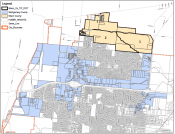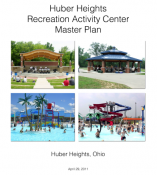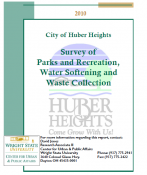Huber Heights Pressure Contour Map December 2016
If you are unfamiliar with the discussion of the North Pressure Zone you can read this article. Here are some of the points made:
Water Pressure
After the project is complete the average water pressure in this new pressure zone will be 80 psi [1]. The typical water pressure for a home in the United States is 40 to 45 psi [2]. Customers are required by Ohio Plumbing Code to install a water-pressure reducing valve if the water pressure to their house is above 80 psi [3]. If the average pressure in the new pressure zone is projected to be 80 psi then obviously some of those homes will require a pressure reducing valve. A quick search of Lowes shows a price range of $70 to $120 for the hardware [4]. Have it installed by a plumber and there will be additional costs.
Concerning the water pressure issue I have stressed two things we should know before going forward on spending this $2.4 million dollars. First, I’ve asked for a real assessment of how many residents in this area have an issue with water pressure. The other information we need is to catalog the potential companies/businesses that we expect are interested in coming to this area. We need to evaluate if they would benefit from higher water pressure and by how much, and then cost out how much it would be for them to fix the problem for their properties?
The vast majority of the 75 to 100 people I have spoken to, understand intrinsically why knowing this information is important. Who would spend $2.4 million dollars of tax payer money just to solve the problem of one person? Maybe this council!
Council members may be having a problem understanding why it is important to find out how many homes are affected because of a natural human reaction of wanting to help a friend. Watch the video of the last work session and you can see that a person, who is a friend of all council members, sent in a video of her faucet and the water was running pretty slow. Does giving one example give you a good feeling about how extensive the problem is throughout the city? How about six examples? How about 60? I can state definitively no member of council has identified 60 homes in this area that have this problem.
The other reason given to promote the project is to help potential businesses avoid the cost of putting in a boost pump for their own property. Remember we have been briefed that the current system has plenty of water for all fire suppression scenarios but some companies might have to put in a boost pump system as part of their building design. With that added expense some people are worried this might prevent a business from locating here. However, we have been given no solid information on how much one of these systems cost or how many potential businesses would need one. A figure of $500,000 was thrown out as a potential cost but no information on what kind of business would need this type of system or how many of those businesses might be able to locate in this area. If it is just two businesses, $1 million is lower than $2.4 million dollars. In other words, we could save more than a million dollars if the city paid for all the resident’s and company’s boost pumps. To be frank, it is unlikely I would support the city paying for these unless we had a solid business plan that showed the city would significantly benefit by providing this kind of business incentive. Currently, this council does not know if there is a single business out there that is interested in using this incentive. They do not know what that business would provide to the city or when it might be they would move in. Yet, on Monday they are going to commit to getting this $2.4 million-dollar solution underway.













